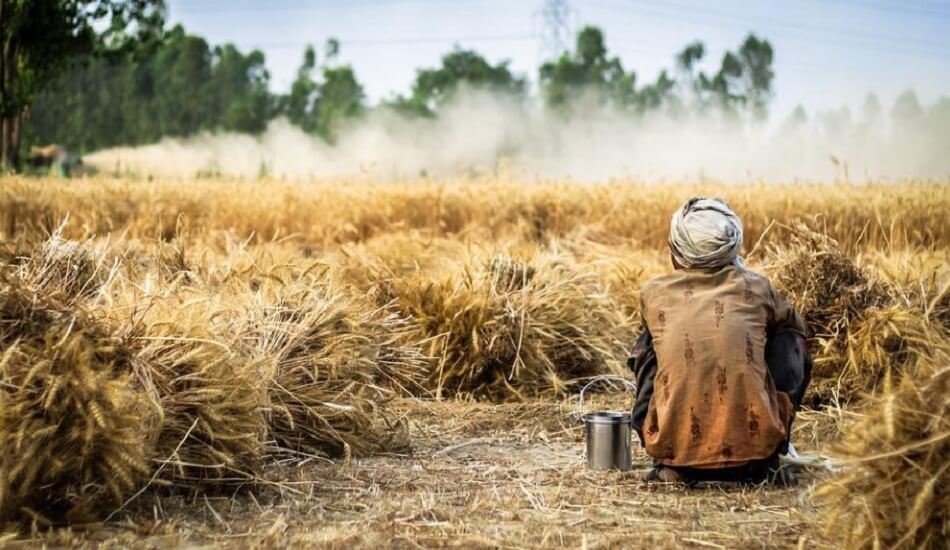After the prohibition on wheat exports, the harvest is bitter for Indian farmers.
When New Delhi decided to limit wheat exports just as prices were skyrocketing as a result of Russia’s invasion of Ukraine, it caused widespread alarm and drove up the price of the commodity even further.
Now, farmers and traders in India are furious because they were not given a windfall despite the fact that local prices have dropped dramatically.
Although India is the second-largest wheat producer in the world, the Indian government, which is also the country’s largest buyer of grain, has stated that despite concerns about inflation, they have made the decision to safeguard food security for the country’s enormous population.
Also Read | Disappointed over ban on wheat export, its like ‘indirect tax’ on farmers – BSK.
Prices reached all-time highs on commodity exchanges in Chicago and Europe as a direct result of this action, in addition to diminishing global supplies from Russia and Ukraine, both of which are among the top five wheat producers in the world.
However, prices went in the opposite direction in Asia’s largest grain market in Khanna, which is located in the state of Punjab, which is known as the breadbasket of India.
At the facility, which is dominated by a dozen enormous storage facilities, each of which is the size of a football pitch, hundreds of farmers from the wheat-growing region sell their crops every year.
Before the export ban, the price of 100 kilos of wheat was 2,300 rupees, which is equivalent to nearly $30. After the prohibition, the price dropped to 2,015 rupees, which is the minimum price that the government has established at which it will buy grain for its extensive public distribution system.
Some farmers in Punjab were already struggling from output losses caused by a severe heatwave when they were among the hundreds of millions of small farmers in India who scrape out an existence on the edge of poverty and are susceptible to the whims of the weather.
They believe that the drop in price means the difference between a huge payoff and heartache for them. Farmer Navtej Singh put aside half of his 60-tonne wheat harvest so that he could sell it during the lean season, which is typically the time of year when prices go up. He is appalled that the government has made this choice.
Now he is making every effort to sell the remaining stock he has. According to him, ‘this ban has come as a shock.’ ‘The price has fallen to its all-time low, and it no longer even comes close to covering our costs. Even one day seems like too long of a wait for me.’
According to him, the authorities did not consult anyone and behaved in a ‘selfish’ manner instead. ‘This year we had already been dealing with output losses, and the ban order has only made things more challenging for us.’
‘Feed the world.’ Prior to the conflict in Ukraine and the heatwave, both India’s wheat production of 109 million tonnes in 2021 and its wheat exports of seven million tonnes were anticipated to increase this year. India’s motto is ‘Feed the world.’
Last month, Prime Minister Narendra Modi even proposed that his country ‘feed the world’ by contributing to the reduction of the global wheat shortfall.
However, increasingly frequent occurrences of extreme weather conditions are being attributed by specialists to the fact that climate change is taking place. The national harvest came in at four million tonnes less than what was anticipated, which was caused by a heatwave that devastated producers in the state of Punjab.
As a result of the reduction in funding for food security programs established during the coronavirus pandemic, federal and state authorities have begun to reduce the amount of grain that is purchased for the public distribution system. This system currently provides nearly 800 million people with free and highly subsidized grains.
Even still, retail wheat flour prices are at a 12-year high. Manish Pajni, head of the grain procurement department for the Punjab government in Khanna, has supported the ban, stating that without it, wholesale rates may have gone as high as 3,000 rupees.
Trader Raj Sood, however, believes that the government should have taken a more cautious approach before suddenly suspending exports and generating chaos in the market.
‘The market was already under stress from the crop problem and, without a thought, the administration came up with the ban,’ he said. ‘The market was already under stress from the harvest crisis.’
‘There is no question that large exporters like Cargill will be the ones to suffer the heaviest losses and Glencore, but also local merchants and farmers will feel the effects of this.’
In addition, many business people in Khanna believe that the effect of the legislation will only be transitory because it is impossible to resist the laws of supply and demand.
Also Read | Immediate stop flag on wheat export to manage country’s overall food security-Center.
Divender Verma, who owns a flour mill and typically acquires his raw materials from government inventories, reported that these supplies were currently at their bare minimum.
‘This time, we are not holding out hope that they would be able to provide for us. Therefore, the situation for wheat is precarious’ Verma said.
It is inevitable that private suppliers will charge more, he noted, which will further drive up the prices of bread and other products made from wheat.


















Add Comment